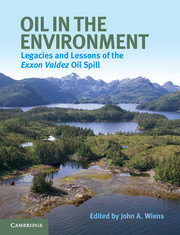Part IV - Assessing oil spill effects and ecological recovery
Published online by Cambridge University Press: 05 July 2013
Summary
Introduction
The chapters in the previous section provide a detailed picture of how studies were designed and conducted, what they assumed, what they found, and what was learned in the process. Putting it all together to assess the real effects of the oil spill and ecologically significant, long-term consequences requires a broader, more synthetic approach. This is the topic of Chapter 16. Mark Harwell, John Gentile, and Keith Parker develop the conceptual framework and operational models for formalized ecological risk assessments, in which all plausible pathways of exposure to oil hydrocarbons are evaluated to determine the likelihood of exposure and its potential consequences. Using the rich lode of data and insights developed in the studies reviewed in the rest of the book, they apply the approach to two species: harlequin ducks and sea otters. Because this risk-assessment framework was not available when the Exxon Valdez spill occurred in 1989, the analyses were not conducted until much later. If applied in the early phases of a spill, however, the risk-assessment approach can help to direct studies to the exposure pathways posing the greatest potential risk.
- Type
- Chapter
- Information
- Oil in the EnvironmentLegacies and Lessons of the Exxon Valdez Oil Spill, pp. 380 - 382Publisher: Cambridge University PressPrint publication year: 2013

